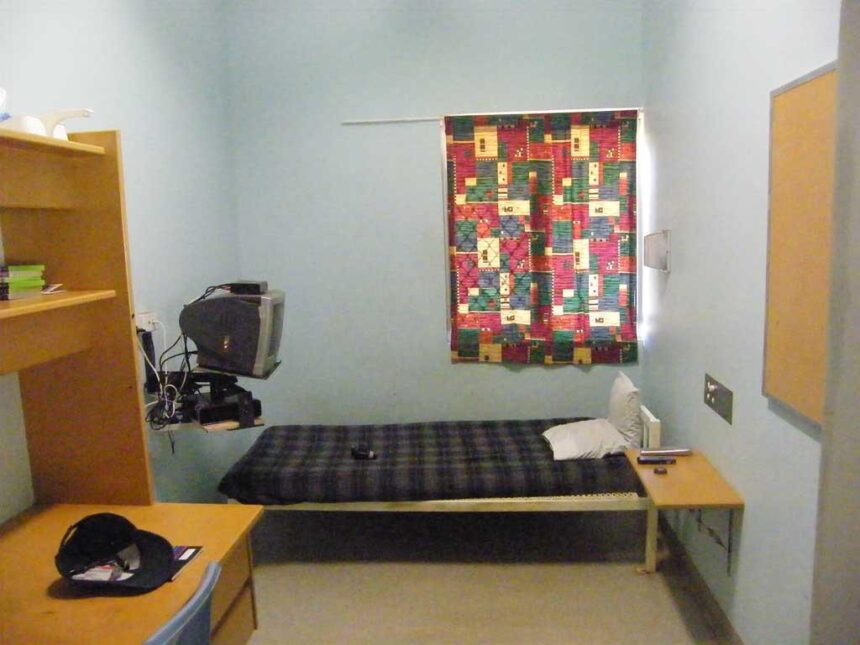In recent years, the debate surrounding prison reform has intensified, raising critical questions about the effectiveness of current incarceration practices. While the push for single-occupancy prison cells is often framed as a progressive step toward reducing violence and improving inmate conditions, a growing body of evidence suggests that this approach may not be the panacea it is touted to be. Instead, advocates for criminal justice reform are pointing to a more promising solution: reintegrating rehabilitated individuals back into society. This opinion piece explores why prioritizing rehabilitation over isolation not only enhances public safety but also addresses the root causes of crime and fosters a healthier, more just community. As conversations around prison reform continue to evolve, it is essential to consider the long-term implications of our incarceration practices and the potential for a more humane and effective approach to addressing criminal behavior.
Reassessing the Need for Single-Occupancy Cells in Prisons
As the debate around prison reform continues to evolve, the push for single-occupancy cells often centers on the premise that isolating inmates can reduce violence and improve safety. However, the evidence supporting this approach remains inconclusive, leading many experts to question its efficacy. Critics argue that single-occupancy cells can foster a sense of alienation and exacerbate mental health issues, particularly for individuals already struggling with psychological challenges. Key points against the necessity of single-occupancy cells include:
- Increased feelings of isolation, which can hinder mental wellness.
- Limited opportunities for social interaction and rehabilitation.
- Potential for higher costs associated with maintaining separate facilities.
Instead of emphasizing solitary confinement as a solution, a stronger focus on rehabilitation could yield more positive outcomes. Building programs that integrate support systems, job training, and family engagement can significantly decrease recidivism rates. By prioritizing reintegration into society over punitive measures, prisons can transform from mere holding facilities into centers that enable personal growth and societal contribution. The potential advantages of prioritizing rehabilitation include:
| Advantage | Benefit |
|---|---|
| Reduced Recidivism | More former inmates stay out of prison. |
| Community Reintegration | Enhanced social ties and support networks. |
| Economic Benefits | Former inmates contribute positively to the economy. |
The Case for Community Reentry Programs as a Pathway to Rehabilitation
The implementation of community reentry programs has emerged as a pivotal solution for addressing the challenges faced by individuals transitioning from incarceration back into society. These programs provide a structured support system, equipping former inmates with essential skills and resources that facilitate their reintegration. By focusing on rehabilitation rather than mere punishment, community reentry initiatives can significantly decrease recidivism rates. Key elements of these programs include:
- Job Training: Offering vocational training to help individuals acquire marketable skills.
- Counseling Services: Providing mental health and substance abuse counseling to address underlying issues.
- Housing Assistance: Helping locate safe and affordable housing options crucial for stability.
- Community Support: Engaging local organizations to foster a sense of belonging and support.
Moreover, studies have shown that individuals who participate in community reentry programs are more likely to find stable employment, maintain healthy relationships, and participate actively in their communities. These positive outcomes not only benefit the individuals themselves but also contribute to broader societal improvements by reducing crime rates and increasing public safety. A comparative overview of statistics highlights the effectiveness of these programs:
| Program Type | Recidivism Rate | Employment Rate Post-Release |
|---|---|---|
| Community Reentry Programs | 30% | 70% |
| Traditional Incarceration | 60% | 40% |
With clear evidence supporting the efficacy of these initiatives, it becomes increasingly important for policymakers to invest in community reentry programs as a humane and practical approach to criminal justice reform. These programs not only aid individuals in their transitions but also promote safer communities through empowerment and accountability.
Strategies for Supporting Successful Reintegration of Former Inmates
Effective reintegration of former inmates into society is essential for reducing recidivism rates and promoting public safety. Community support systems play a crucial role in this process. Local organizations can provide essential resources such as job training, housing assistance, and social services to facilitate the transition. Education opportunities must also be prioritized, equipping individuals with the skills necessary to thrive in a competitive job market. Furthermore, fostering mentorship programs that connect former inmates with community members can bolster motivation and accountability, making the shift back into civilian life smoother.
Another vital aspect of successful reintegration is the establishment of strong family ties. Research indicates that maintaining family connections during incarceration significantly aids in the successful return to society. Programs that encourage family engagement can assist former inmates in rebuilding these relationships. Additionally, mental health support services should be easily accessible, addressing the psychological challenges that accompany reintegration. Together, these strategies create a comprehensive framework that not only sees former inmates as individuals with potential but also as valuable community members ready to contribute positively to society.
In Conclusion
In conclusion, the debate surrounding prison reform continues to evoke strong opinions and a variety of proposals. While single-occupancy cells are often championed as a more humane alternative to overcrowded facilities, evidence suggests that they may not effectively address the underlying issues of rehabilitation and recidivism. Instead, a more compassionate and pragmatic approach lies in supporting reintegration programs that provide returning citizens with the necessary resources and opportunities to rebuild their lives. By prioritizing rehabilitation over punishment and fostering an inclusive society, we can address the root causes of criminal behavior and pave the way for safer communities. As policymakers grapple with these pressing issues, it is imperative that we focus on solutions that promote healing and empowerment rather than isolation.









